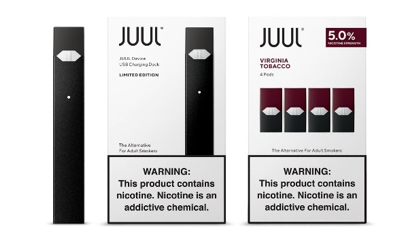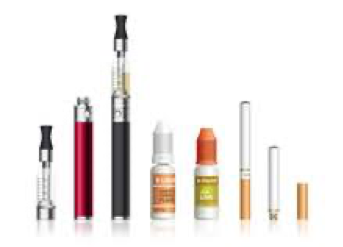Under an existing court order, Food and Drug Administration (FDA) has until September 9 to make its final decisions on whether to issue Premarket Tobacco Product Application (PMTA) orders allowing the continued marketing of Juul and the many other e-cigarettes with pending applications and, if so, what restrictions and requirements on the products and their marketing FDA will put in any orders allowing their marketing.
FDA can issue a PMTA order to allow an e-cigarette’s marketing only if it finds that doing so is “appropriate for the protection of the public health.” Under this standard, FDA needs to determine whether allowing an e-cigarette’s marketing (with any restrictions and requirements FDA includes in the final PMTA order) will most likely reduce overall tobacco-related health harms and risks without any significant risk of creating a net increase in future harms and risks.
But FDA is legally barred from following a pure harm-reduction approach
When determining whether a rule or PMTA order is “appropriate for the protection of the public health,” the Tobacco Control Act (ACA) requires FDA to focus on reducing overall or net tobacco-related harms. It does not matter whether some new health harms are also created, so long as the net result is a significant reduction to total tobacco-related harms. Nor does the act care about who experiences the various harm reductions (or any harm increases underlying the net harm reductions). For example, when FDA evaluates the future harms and harm-reductions likely to be caused by allowing the future marketing of an e-cigarette, the “appropriate” standard does not care whether the harm reductions or new harms are experienced by adults or youth, male or female, black or white. It requires only that the net impact reduces total tobacco-related harms.
If that were all the act’s standard said or required, FDA could follow a simple harm-reduction approach when evaluating the e-cigarette applications for PMTA orders. FDA could look solely at whether allowing the marketing of the e-cigarettes, by promoting smoker switching, was highly likely to reduce overall health harms related to tobacco use, with no significant risk of increasing those overall harms, instead. If the e-cigarette marketing would also cause some underlying new health harms (e.g., by increasing e-cigarette use among otherwise non-using youth or adults or by preventing some smokers from quitting all use), FDA would have a legal and ethical duty to try to reduce them by including related product and marketing restrictions and requirements in the final PMTA orders. But FDA could still accept any future new health harms or risks — including future e-cigarette use among youth who would not otherwise use any tobacco product — if FDA determined that they were just an unfortunate and unavoidable byproduct of the e-cigarette marketing securing overall net health harm reductions.
However, the TCA and its legislative history make it very clear that FDA cannot look only at the net impact on tobacco-related harms when determining whether issuing a PMTA order allowing the continued marketing of an e-cigarette is “appropriate for the protection of the public health” and, therefore, legally valid. The U.S. House of Representatives’ committee report on the legislation that created the Tobacco Control Act states that the objectives of the legislation are to provide FDA “with the proper authority over tobacco products in order to protect the public health and to reduce the number of individuals under 18 years of age who use tobacco products.” Similarly, the TCA’s Purpose section states that its purpose is to ensure that FDA has the authority “to address issues of particular concern to public health officials, especially the use of tobacco young people and dependence on tobacco.”
At the same time, nothing in the Tobacco Control Act or its legislative history indicates that FDA should or may put a higher priority on reducing youth tobacco use harms (or overall health harms related to tobacco use) than it puts on reducing youth tobacco use. For example, the Findings and Purpose sections are silent on this point, although they refer directly and indirectly to both objectives a number of times and Finding 14 notes the connection between reducing youth tobacco use and reducing future death and healthcare costs.
Similarly, none of the act’s many references to “youth,” persons under 18 year of age, “children,” “minors,” or “underage” outside of the Findings and Purpose sections indicate that FDA’s implementation of the Tobacco Control Act should give a higher (or lower) priority to protecting the public health or reducing overall health harms and risks from tobacco use compared to reducing the number of youth who use tobacco products. All but two refer to protecting youth from tobacco product marketing or otherwise preventing or reducing youth use (see, e.g., Sec. 105). And the two references to youth harms, as opposed to youth use, do not relate to FDA action or the objectives of the TCA. The first, in the TCA section about cigarette warning labels, refers to a warning about harms to children from exposure to secondhand smoke, and the second reference simply requires the Comptroller General to conduct a study of cross-border trade in tobacco products that, among other things, includes collecting “data on the health effects (particularly with respect to persons under 18 years of age) resulting from cross border trade.”
Going further, nothing in the act or its legislative history indicates that FDA should or may put a higher priority on reducing the number of youth using any specific type of tobacco product (e.g., cigarettes) instead of focusing on reducing the total number of youth who use any type of tobacco product. For example, Findings (14) and (15) refer only to youth smoking, but that simply reflects the fact that youth smoking was the most prevalent form of youth tobacco use, by far, when the TCA was drafted and signed into law. Similarly, Findings (31) and (32), which pertain to the Final Rule the TCA requires FDA to implement, refer to only youth smoking and youth smokeless tobacco use because those were the only tobacco products covered by the Final Rule. More importantly, those findings refer to those two very different forms of addictive and harmful youth tobacco product use, and the government’s substantial interest in reducing youth use of both of them, without indicating that reducing one is more important than the other — despite the fact that smoking is considerably more harmful and deadly to users and exposed nonusers than smokeless tobacco use.
Accordingly, FDA cannot follow a pure harm-reduction approach when making its PMTA decisions. It cannot simply accept future increases in the total number of youth tobacco product users even if more will be using less-harmful tobacco products, fewer will be smoking, and overall tobacco-related health harms among youth will decline. Nor can FDA accept increases in overall youth tobacco use — caused by increases in e-cigarette use among youth who would not otherwise use any tobacco product — as an acceptable tradeoff for securing net public health gains from some smokers switching to e-cigarettes and from some youth who would otherwise smoke using e-cigarettes, instead.
Instead, FDA must focus its PMTA decisions and its other tobacco control efforts not only on preventing and reducing total tobacco-related health harms but also on preventing and reducing the total number of persons under the age of 18 who use any tobacco products.

A prior published paper of mine inaccurately stated that the TCA’s “appropriate for the protection of the public health” standard gives equal priority to preventing and reducing youth tobacco use and harms as adult use and harms. That paper’s analysis remains accurate regarding the standard not putting a higher priority or value on preventing or reducing health harms if they are experienced by youth versus adults. But it did not consider or reflect the TCA legislative history establishing that the act intends FDA to use its powers under the act to pursue two equal objectives: protecting the public health (e.g., reducing overall tobacco-related harms and risks) and reducing the number of individuals under the age of 18 who use tobacco products.
What does this mean for FDA’s Evaluations of E-Cigarette Applications for PMTA orders?
If FDA takes the twin objectives of the Tobacco Control Act legislation seriously — and interprets and applies its “appropriate for the protection of the public health accordingly — FDA must follow a multi-step process to determine whether to allow any e-cigarettes to stay on the U.S. market and, if so, how to structure its PMTA orders allowing such marketing.
First, FDA must determine that allowing the marketing of the e-cigarettes will likely reduce overall health harms related to tobacco use without creating any significant or offsetting risk of increasing overall health harms, instead.
- Assuming that using only e-cigarettes is less harmful than smoking, the only sure way e-cigarettes can reduce health harms is if smokers who would not have otherwise quit smoking switch entirely to using e-cigarettes. Or if youths who would otherwise have become addicted smokers become regular e-cigarette users instead.
- It is also possible that using e-cigarettes to sharply reduce one’s smoking to minimal levels could secure some harm reductions. But dual use, even with considerable smoking declines, could be just as harmful as only smoking or even more harmful because even reduced smoking levels are still very harmful and e-cigarettes, delivering toxins as an aerosol, including some not found in cigarette smoke, can harm the body in different ways than smoking.
- Any other regular use of e-cigarettes by smokers or other adults or youth will also increase health harms, even if their use is considerably less harmful than smoking. Most clearly, any use by youth or adults who would not otherwise use any tobacco product will increase overall harms (especially if it later evolves into smoking). And any e-cigarette use by smokers that stops or delays their smoking cessation or their quitting all tobacco-nicotine use will also increase overall health harms.
So, to let any e-cigarettes stay on the market, FDA has to determine, first, that the harm reductions from their future use as a complete substitute for traditional cigarette smoking by those who would otherwise smoke will be larger than the new health harms potentially caused by all other uses of the e-cigarettes — and will not create any unnecessary harms that could readily be avoided (e.g., through applying additional restrictions and requirements on the products and their marketing through the final PMTA order).
Then, as a second step, FDA must determine whether allowing the e-cigarette marketing will increase the total number of persons under the age of 18 who use tobacco products (including e-cigarettes). If not, FDA may allow the marketing of the e-cigarettes — so long as the final PMTA order included all readily available restrictions and requirements on the products and their marketing that would prevent the e-cigarette marketing from causing any new health harms or youth use that could be prevented or reduced without reducing the expected net public health gains.
However, if allowing the e-cigarette marketing would still create a significant risk of increasing overall youth tobacco use (despite any measures FDA could include in the final order to prevent that), FDA must determine whether allowing the marketing of the e-cigarettes would still be “appropriate for the protection of the public health” and consistent with the twin objectives of the TCA legislation: to protect the public health and reduce the number of persons under the age of 18 who use tobacco products. In other words, FDA must balance the likelihood and size of any unavoidable increased youth use caused by the e-cigarette marking against the likelihood and size of any expected reductions in tobacco-related health harms. But, as describe earlier, neither the Tobacco Control Act nor its legislative history provides any guidance as to how FDA should balance these two objectives against each other when one cannot be secured without contradicting the other.
Without any legislative or statutory guidance, we can still assume that it would be reasonable (and not “arbitrary or capricious” or otherwise invalid under the Administrative Procedures Act) for FDA to determine that it would be “appropriate” and otherwise consistent with the Congress’ twin objectives for the TCA to allow the marketing of an e-cigarette if doing so would be highly likely to sharply reduce overall health harms while causing only minor increases in overall youth tobacco use (especially if the resulting youth use would be less harmful than prior youth use because fewer youth would smoke). But how FDA might reasonably (and legally) balance the two goals against each other in closer cases is unclear.
Could FDA Issue PMTA Orders Allowing the Marketing of Any E-Cigarettes?
So far, e-cigarette use among youth who would not otherwise smoke appears to be much more common than smokers using only e-cigarettes. In addition, e-cigarette use by smokers has been dominated by dual use and, while dual use has been declining, it remains unclear whether smoker e-cigarette use will end up accelerating and increasing or reducing and delaying either smoking cessation or total cessation of all tobacco-nicotine use.
That suggests that it might be quite difficult for FDA to determine that allowing the marketing of any e-cigarettes will likely produce a net reduction in future health harms related to tobacco use with no significant risk of creating a net increase, instead.
It also suggests that allowing the continued marketing of e-cigarettes could increase the total number of persons under the age of 18 who use tobacco products — which would force FDA to try to figure out whether the possible harm reductions from allowing the continued marketing of any e-cigarettes were so much larger relative to the possible overall youth use increases that it would still be “appropriate” to allow the e-cigarettes continued marketing.
However, in any PMTA orders to allow e-cigarette marketing, FDA has the power to include any restrictions and requirements on their labeling, packaging, marketing, and sale that would increase their harm-reducing potential or reduce any collateral risks or harms, such as increased youth use.
Using those powers, FDA’s PMTA order allowing Philip Morris’ “heat-not-burn” IQOS cigarette on the market stated that it may not be advertised or sold via any electronic media without strict age and ID verification to prevent youth exposure or purchases. FDA will likely place that same requirement on any e-cigarettes it allows to be marketed — but FDA could include much more both to protect public health and to reduce the number of persons under 18 who use e-cigarettes.
For example, FDA could prohibit any e-cigarettes with any added flavors other than tobacco and menthol (the only flavors now allowed for cigarettes). Or could allow only tobacco and unflavored versions, and use other measures, instead of flavors, to prompt smokers to switch. FDA could further prevent youth use by allowing e-cigarette sales only in stores that do not allow youth, such as adult-only vape shops or tobacconists. FDA could also allow e-cigarette advertising only via direct communications to pre-verified adult smokers, and prohibit the sale of cheaper, disposable e-cigarettes, which tend to be used more by youth than by smokers trying to switch.
To try to ensure that e-cigarettes are used only in harm-reducing ways, FDA could require that e-cigarette labeling, package inserts, and ads explain how to use them to reduce health harms and how all other uses increase health harms and risks.
Putting such restrictions and requirements in any e-cigarette PMTA orders FDA issues would increase the likelihood and size of the net reductions in tobacco-related harms secured by the e-cigarettes marketing. They would reduce future harm-increasing uses of e-cigarettes, but the e-cigarettes would still be readily available for adult smokers to use as potentially harm-reducing alternatives.
At the same time, these restrictions and requirements would work directly to prevent and reduce youth e-cigarette use, thereby reducing the risk that allowing the e-cigarettes marketing would increase the number of persons under the age of 18 who use tobacco products.
That could be enough to make it possible for FDA to issue PMTA orders to allow the marketing of certain e-cigarettes as “appropriate for the protection of the public health” and otherwise consistent with the Congress’ twin objectives for the Tobacco Control Act. If not, FDA could supplement the PMTA Orders with public education campaigns or other efforts that would promote harm-reducing e-cigarette use by smokers and further dampen any harm-increasing uses, especially any e-cigarette use by youth who would otherwise not use any tobacco product.
Will FDA Do the Right Thing?
In the few PMTA orders FDA has already issued to allow the marketing of other types of tobacco products, FDA failed to include numerous restrictions and requirements on the products and their marketing that would have better protected the public health. However, unlike with the previous PMTA products, the public health risks from the marketing and sale of e-cigarettes, especially in terms of increased overall youth use, are already well known. That could prompt FDA to act more responsibly this time. In addition, FDA’s failure to comply with applicable laws to protect the public health more effectively in its prior PMTA orders is now a matter of public record, making FDA vulnerable to corrective lawsuits. That should also make continued FDA PMTA failures less likely this time.
It is also possible that some e-cigarette manufacturers have not waited for FDA to put any restrictions or requirements in their final PMTA orders and have included in their applications certain manufacturer proposed product and marketing restrictions and requirements to increase their chances that FDA will find it “appropriate for the protection of the public health” to allow the continued marketing of their e-cigarettes.
Unfortunately, what FDA ultimately ends up doing could depend largely on a range of political and bureaucratic factors, rather than on just what’s best for the public health or for youth. Since the 2009 Tobacco Control Act gave FDA extensive powers to regulate tobacco products, FDA has never received the White House support it needs to take strong, effective action to sharply reduce the many deaths and harms caused by smoking. With luck, the Biden administration will support FDA more than the Trump or Obama administrations did and FDA will be able to do what’s right with the e-cigarette PMTA orders (and with issuing related rules).
If you think FDA should be allowed to move more quickly and effectively to reduce tobacco use harms and costs, you could contact the White House directly and say so.








